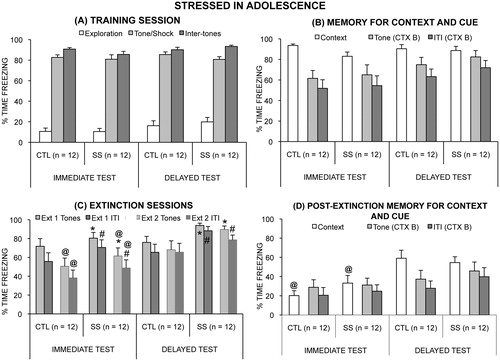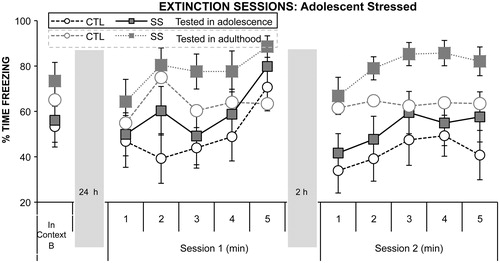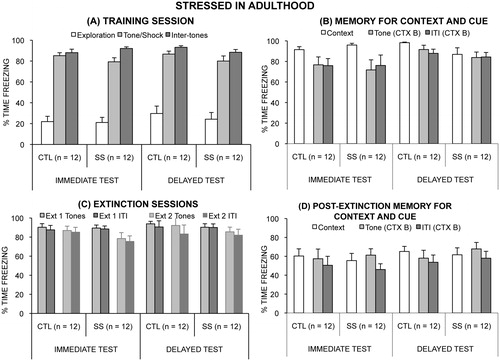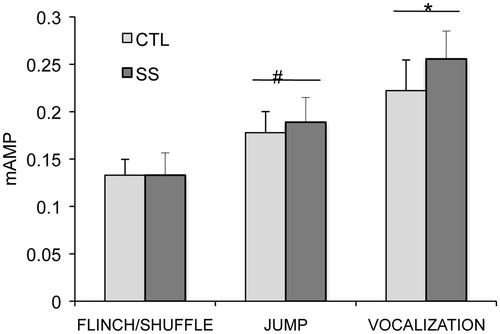Figures & data
Figure 1. A timeline illustrating the experimental design and ages of rats in the adolescent stress and adult stressed experiments and the days of the fear conditioning sessions for the two time of testing groups (Immediate and Delayed).

Table 1. Symbols indicate whether freezing was the same as (=), greater than (↑), or less than (↓) for control rats after social instability stress (SS) administered in adolescence or in adulthood in females in the current study or in males in a previous study and tested either soon after or weeks after the stress procedure.
Table 2. Symbols indicate whether freezing was the same as (=), greater than (↑), or less than (↓) for adult rats in females in this study and in males in a previous study (Morrissey et al., Citation2011).
Figure 2. Mean (+/− SEM) time spent freezing in the stressed in adolescence experiment during (A) the first test day, in which fear was conditioned, (B) the memory test days (context on the second and cue on the third test day), (C) the two extinction sessions on the fourth day, and (D) the memory for extinction test days (context on the fifth and cue on the sixth test day). In (C), adolescent socially stressed (SS) rats froze more to the presentation of tones (*p = 0.03) and during the inter-tone intervals (#p = 0.04) than did control (CTL) rats. In the second session, rats in the Immediate test group (adolescent rats) froze less to the presentation of tones (@p = 0.006) and during the inter-tone intervals (p = 0.001) than did the Delayed test group (adult rats). In (D), rats in the Immediate group spent less time freezing than did rats in the Delayed group to the conditioning context (@p < 0.0001).

Figure 3. Mean (+/− SEM) time spent freezing in Cue Test and then across minutes in each extinction session for the Stress and Time of Test Groups.

Figure 4. Mean (+/− SEM) time spent freezing in the stressed in adulthood experiment during (A) the first test day, in which fear was conditioned, (B) the memory test days (context on the second and cue on the third test day), (C) the two extinction sessions on the fourth day, and (D) the memory for extinction test days (context on the fifth and cue on the sixth test day).

Figure 5. Mean (+/− SEM) current amplitude that elicited behaviours of flinch/shuffle, jump, and sonic vocalization. There were no significant differences between CTL and SS female rats in current amplitude necessary to elicit each behavior. Jumps occurred at significantly higher current amplitudes than flinch/shuffle (#p < 0.0001), and sonic vocalizations occurred at significantly higher current amplitudes than jumps (*p = 0.008).
